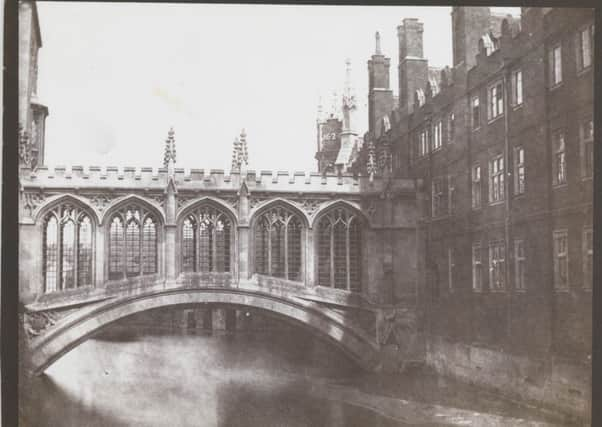Creative invention


Later this month, a new exhibition opens at the National Media Museum in Bradford exploring the life and work of William Henry Fox Talbot, the inventor of modern photography.
Fox Talbot: Dawn of the Photograph features more than 200 images and objects, including a selection of the earliest cameras and photographs in existence, as well as original documents relating to some of the first experiments in photography.
Advertisement
Hide AdAdvertisement
Hide AdA 19th century scientist and inventor, WHF Talbot became interested in the idea of the photograph in 1833 during a trip to Italy. Having traced the outline of a landscape using a Camera Lucida, pencil and paper, Talbot was inspired to start work on a process that directly reproduced the “inimitable beauty of the pictures of nature’s painting, which the glass lens of the camera throws upon the paper”.
Following several years of experimentation, he announced the news of his photographic process in January 1839, just weeks after Frenchman Louis Daguerre had revealed his invention, the Daguerreotype, to the world.
Both men used light sensitive chemicals to permanently create a photographic image, however Talbot produced the image on paper (Daguerreotypes used silver-plated copper) and, significantly, was able to produce multiple copies. He called his system the ‘negative-positive’ process, and it became the foundation for mainstream photography for more than 150 years, until the advent of the digital camera.
Fox Talbot: Dawn of the Photograph features some of the original apparatus used by the British inventor including the famous ‘Mousetrap’ camera (named by Talbot’s wife Constance due to their small box-like appearance), his Calotype Camera, and Camera Obscura.
Advertisement
Hide AdAdvertisement
Hide AdAlso exhibited are examples of Talbot’s earliest photographs – images renowned throughout the world of science and photography: The Haystack (c. 1844), Chess Players (c. 1844), Constance Talbot (portrait, 1840), Notre Dame, Paris (1843) – plus many taken around Lacock Abbey, Talbot’s home and workplace.
Five years after making his discovery public, Talbot published The Pencil of Nature, the first commercial publication to be illustrated using photographs. It demonstrated that alongside his artistic and scientific aspirations, Talbot had one eye on photography’s commercial potential, and an ambition to serve both a creative medium and one of mass production.
The exhibition, which first appeared in Media Space at the Science Museum, is co-curated by Greg Hobson and Russell Roberts. “Photography without question was one of the most profound inventions of 19th century Britain,” says Roberts, Reader in Photography at the University of South Wales. “Talbot not only set in motion a new way of seeing but, through his writings and experiments, identified the distinctiveness of photography as an art, science and industry.
“This exhibition allows us to fully appreciate the extent of his achievements and to reinforce the impact of his invention on social and cultural life.”
Fox Talbot Dawn of the Photograph is at the National Media Museum, Bradford, November 18-February 8, 2017. Entry is free. www.nationalmediamuseum.co.uk